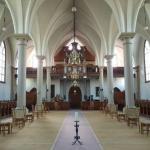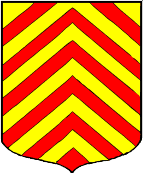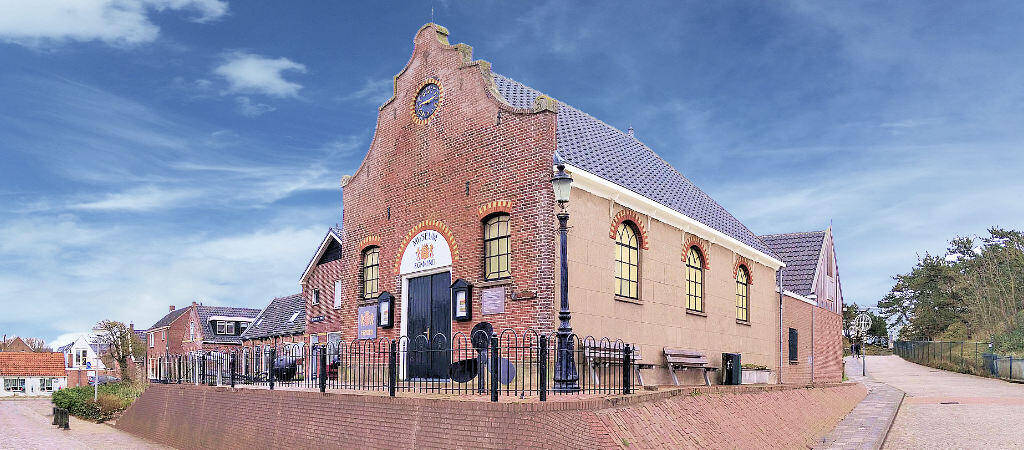
Experience the Three Egmond Mountains from the inside out
In the Museum of Egmond, experience the thousand-year history of the three Egmond Islands, the ups and downs of life by the dunes and the sea. Taste the atmosphere of old Egmond with a past of beachcombers, fishermen, rescuers, colony children and bathers.
Atmospherically decorated
Of particular note is the beautiful building itself: a former church that now houses the rowboat, fisherman’s room and beautiful stained-glass windows. The museum is attractively and cozily decorated by artists.
You will also see the work of artists inspired over the centuries by images of fishing boats by the beach and the ruins of the castle and abbey.
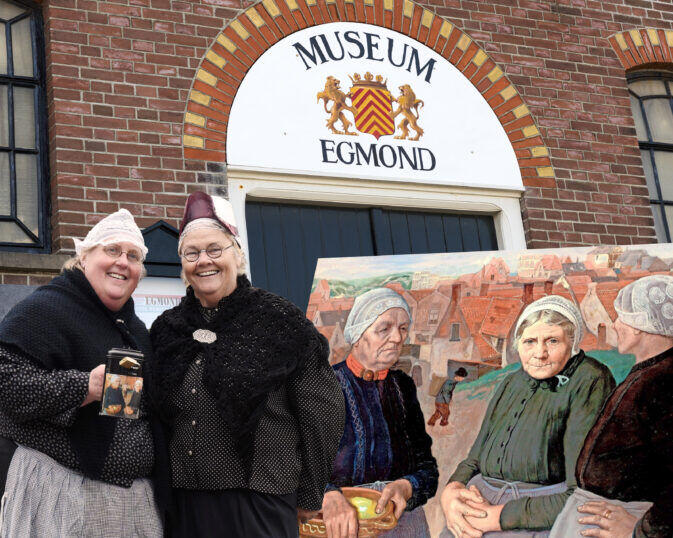
The vanished Egmond
Part of the village disappeared into the sea, church and all, in the 17th and 18th centuries. A map hangs in the museum showing this clearly. With a dam of riding timber and stones, they still tried to stem the tide.
But in a severe storm in 1743, the front part of the church collapsed into the sea. From inn “De Vergulde Wagen,” the bedsteads hung over the beach. Visitors to the museum always get a little quiet with this story. Fortunately, the coast is constantly being raised with sand and we need not fear this. The clock from the defunct church – at the time the village’s only clock – still serves here in the museum.
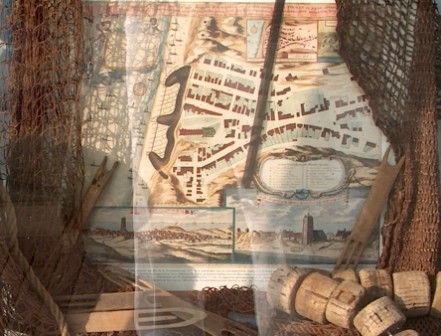
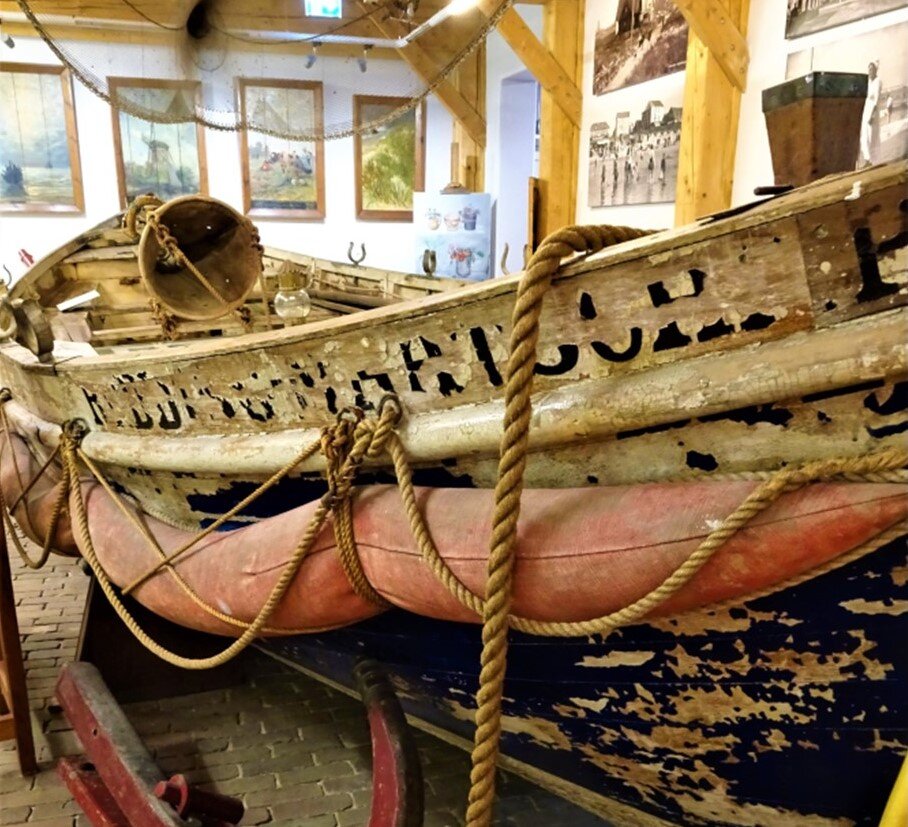
Rowing rescue boat
The “barge shed” houses the old rowing lifeboat used to rescue numerous shipwrecked sailors. Impressive to realize that ordinary Egmond people, went out to the wild sea with this small ship. The many boat skippers have a place of honor in the museum. They are almost always relatives of Egmonders who still live here. The museum shows footage of the grounding of two ships in 1935: the “Kerkplein” and the “Drente. The rescue of the crew of the Drente was spectacular and became national news.
Details museum
Each year there is a new temporary exhibition and the permanent exhibition is also refreshed regularly. There is a fun quest through the museum for children and the dress-up dolls occasionally want to wear something different. The museum is also a beautiful wedding venue. Several brochures on the history of the Egmond are available for sale.
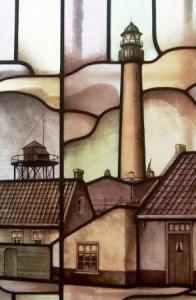 Maps of (among other things) stained glass windows
Maps of (among other things) stained glass windows
The museum has beautiful cards for sale with images of the stained glass windows. New donors will receive a pack of duplicate cards with envelopes as a gift.
Tours and group visits at the museum
Outside opening hours, the museum is open year-round by appointment for groups of about eight people or more, with a small or extended tour. Also in German or English upon request.
Learn more
See also the pages about Egmond aan Zee and read Stories about Egmond. For the museum’s history and appointments, see year-round www.museumvanegmond.nl. Read more about the history of the Egmond at www.historischegmond.nl or see the collection of Egmond books in the library at Egmond aan den Hoef, entrance next to the shopping center. Guests can also go there.
What else is there to see around the museum?
Fisherman’s cottages
In the narrow streets surrounding the museum, you can still see some examples of old fishermen’s houses. These were so small that the children had to sleep together in the attic. Often there was no front door, but each entered through a gate at the back of the courtyard. There hung laundry to dry, or tasty dabs. The residents also had a manure pit for all the waste, which was neatly covered with helmet from dunes. The streets were still long simply made of sand, and when it stormed, you would stew blind.
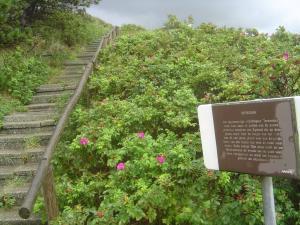 Towering dune: beautiful view
Towering dune: beautiful view
If you go up the sidewalk on the right next to the museum, you will come to a dune staircase, which leads to the top of the Towers Dune. A real dune, a piece of “wilderness” in the middle of the village. That’s what it’s called in old books. One of the few remaining places where you can still clearly see that Egmond was built in the dunes. From here you have a magnificent all-round view of the sea, the village and the dunes, and you can also see the lighthouse originally called the “North Tower. Also note three unusual, somewhat larger buildings on the north side of the village. These are former children’s or colony homes. The large white building to the east is known as the “Prince Henry Foundation,” until recently a home for former sailors.
South Tower
In the middle of this dune, the South Tower was built in 1833. Lighthouse keepers kept the oil light of two lighthouses burning until late 1891 so that ships had a line of light to orient themselves on. With the arrival of a port in IJmuiden that also included two lighthouses, it had become confusing for shipping. Around 1915, the South Tower was sold for demolition.
Text and photos © Carla Kager.
Reproduction only by permission at c.kager@xs4all.nl and with acknowledgement of source.
Museum of Egmond
Zuiderstraat 7 Egmond a/Zee
P.O. Box 193, 1930 AD
Tel: 072 5069164 (museum)
Tel: 072 5064912 (secretary)
info@museumvanegmond.nl
Opened
April 30 to October 31
Daily 2 p.m. to 5 p.m.
Entrance
Adult €4.
4 – to 17 yrs. € 2,- incl. museum quiz
0 – 4, museum card: free
Donors free of charge
with (grand)children <18
For groups year-round by appointment
The museum is ground-level and wheel-friendly.





